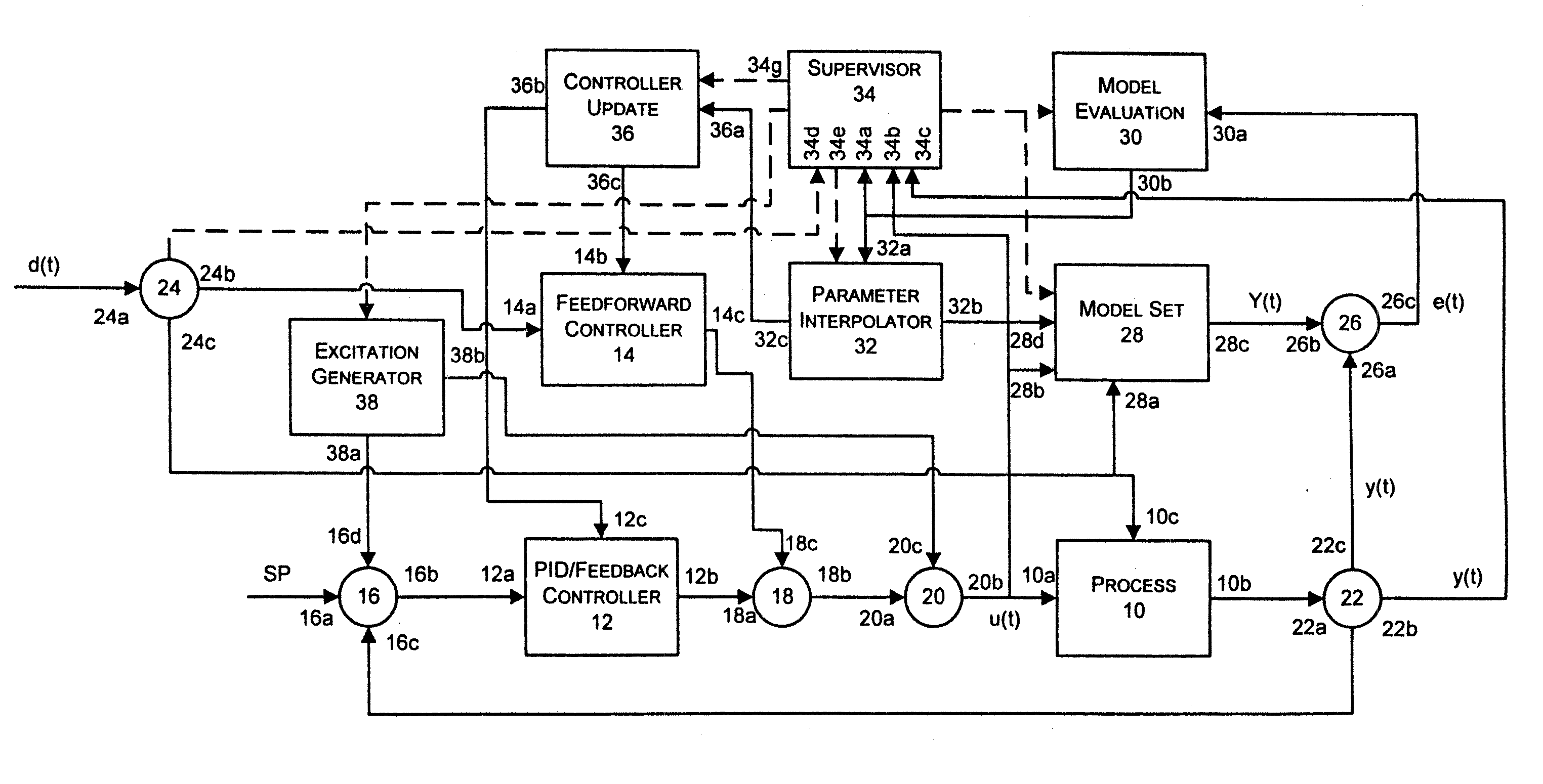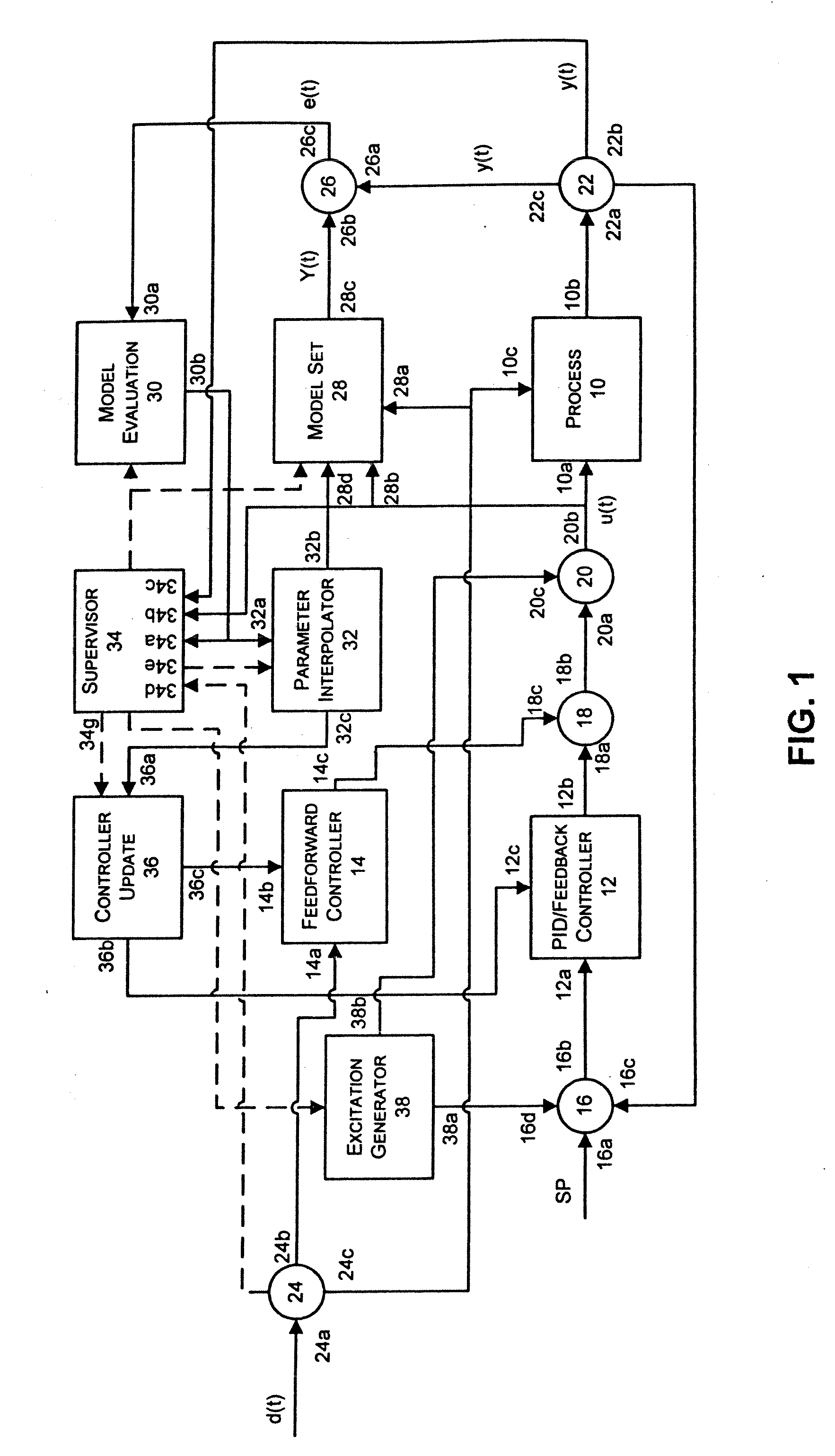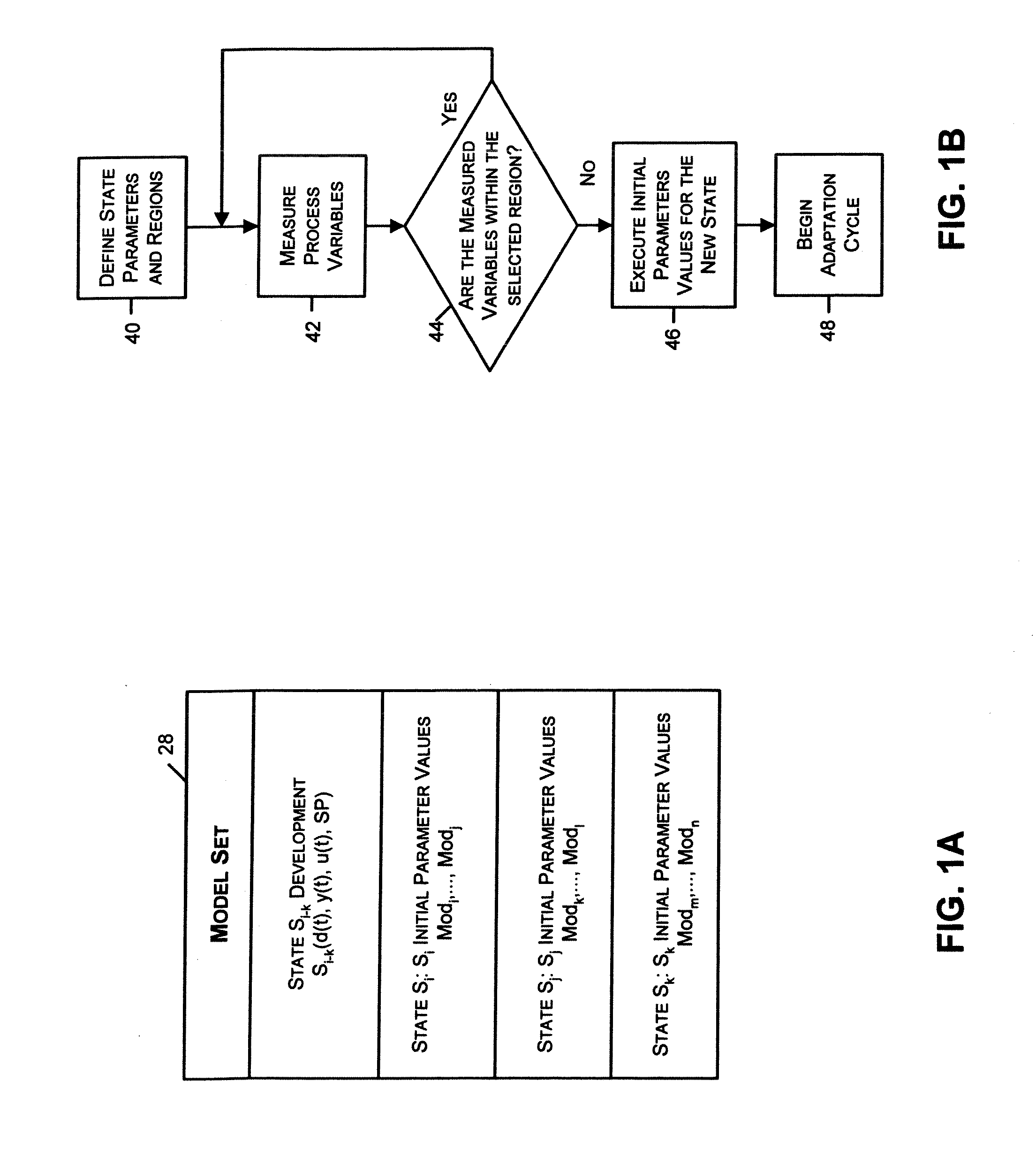State Based Adaptive Feedback Feedforward PID Controller
a pid controller and state-based technology, applied in the field of process control techniques, can solve the problems of increasing exponentially, affecting the performance of model-based switching strategies, and overshadowing the advantages of prerouted controller tuning systems
- Summary
- Abstract
- Description
- Claims
- Application Information
AI Technical Summary
Benefits of technology
Problems solved by technology
Method used
Image
Examples
Embodiment Construction
[0025]FIG. 1 illustrates an exemplary adaptive feedback / feedforward (FB / FC) PID controller used to control a process 10. The general operation of such systems is well known by those skilled in the art. See, for example, F. G. Shinskey, Process Control Systems: Application, Design and Tuning, 4th ed., McGraw-Hill, New York, 1996. The adaptive control system illustrated in FIG. 1 includes a PID controller 12 incorporating a feedback (FBC) controller, and a separate feedforward (FFC) controller 14.
[0026] The process control system may be conveniently described with reference to an FBC input node 16, of FBC output node 18, a process input node, a process output node 22, a feedforward controller (FFC) input node 24, and an error node 26. In a manner familiar to those skilled in the art, a process set-point signal, SP, is applied to a first input of FBC input node 16, indicated by the numeral 16a. An output 16b of FBC input node 16 is coupled to an input 12a of the PID controller 12. An ...
PUM
 Login to View More
Login to View More Abstract
Description
Claims
Application Information
 Login to View More
Login to View More - R&D
- Intellectual Property
- Life Sciences
- Materials
- Tech Scout
- Unparalleled Data Quality
- Higher Quality Content
- 60% Fewer Hallucinations
Browse by: Latest US Patents, China's latest patents, Technical Efficacy Thesaurus, Application Domain, Technology Topic, Popular Technical Reports.
© 2025 PatSnap. All rights reserved.Legal|Privacy policy|Modern Slavery Act Transparency Statement|Sitemap|About US| Contact US: help@patsnap.com



